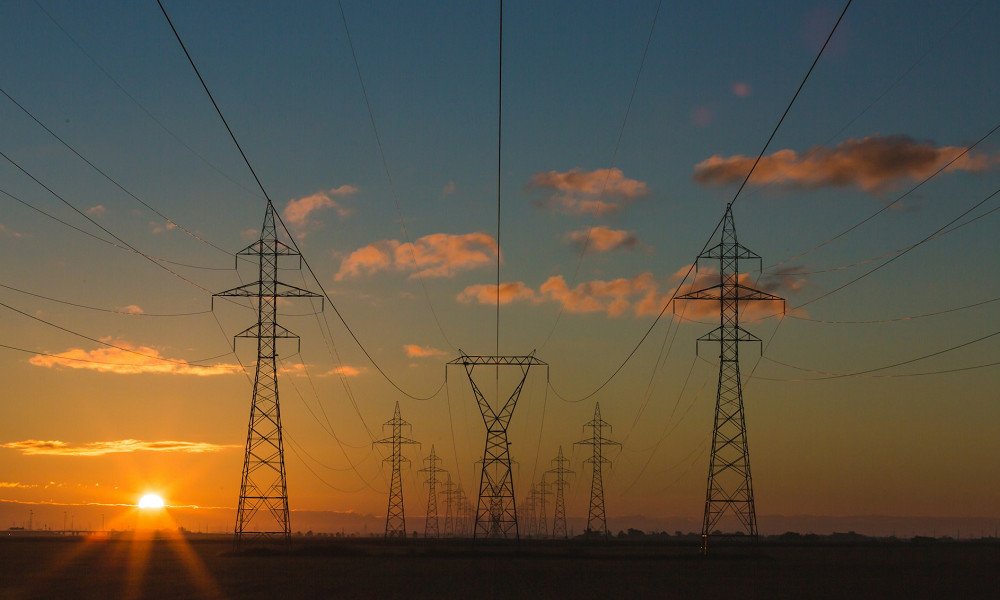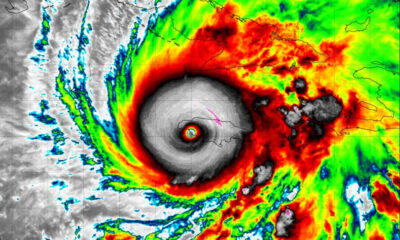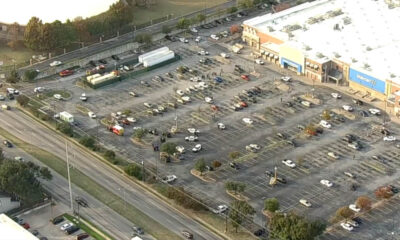Reviews
Why Backup Power Systems Are Becoming Essential In A World Of Climate Instability

A decade ago, many of us treated backup power systems as a nice-to-have. Today, they’re edging into must-have territory. Weather is weirder, outages last longer, and the grid wasn’t built for the way we live and work now. If you’ve felt that creeping vulnerability, wondering how we’d keep medicine cold, charge devices, or run a home office this guide lays out the why and the how, without hype.
And since more people are experimenting with small home setups or even modest off-grid additions, tools like solar inverters inevitably enter the conversation, not as some niche hobby gear but as part of a practical, modern backup strategy.
How Climate Instability Is Reshaping Grid Reliability
More Frequent And Severe Weather Extremes
We’re seeing more compound events, heat domes that strain air-conditioning, atmospheric rivers that flood substations, polar vortices that freeze gas supply. NOAA records show a rising count of billion-dollar disasters over the past decade, and outages often follow. It’s not just frequency: it’s duration. When roads are blocked and repair crews can’t get in, interruptions stretch from hours to days, which is why many homeowners and small operators are turning to reliable components like anderson powerpole connectors to keep emergency setups stable when the grid falters.
Aging Infrastructure And Cascading Failures
Much of the North American grid was built in the 1960s–1980s. Aging transformers, long transmission corridors, and deferred maintenance create brittle points. One line trips, load shifts, and a localized fault can ripple. We all remember headline blackouts where a tree branch, software flaw, or iced-over gas plant set off a wider outage. Climate stress simply exposes those weak links faster.
Rising Demand, Wildfire Shutoffs, And Grid Constraints
Electrification is growing, heat pumps, EVs, data centers. At the same time, utilities in fire-prone regions deploy public safety power shutoffs to prevent ignitions during wind events. Add supply constraints during heat waves and you have more rolling outages and voltage sags. That’s why resilient backup power systems aren’t a luxury: they’re practical risk management.
Types Of Backup Power Systems Today
Portable And Standby Generators
Portable generators are affordable and quick to deploy for essentials, but require safe fueling, outdoor operation, and manual setup. Standby (whole‑home) generators run on natural gas or propane, start automatically via a transfer switch, and can power most circuits. They shine in multi‑day outages but bring fuel, noise, and maintenance considerations.
Battery Storage And Solar-Plus-Storage
Home batteries deliver silent, instant backup with no exhaust, ideal for indoor-safe resilience. Paired with rooftop solar, they can recharge during daylight, extending runtime and cutting utility bills through time‑of‑use shifting. Modern systems support critical-load panels so we back up what matters without oversizing. Standalone storage now qualifies for a federal tax credit, improving economics.
Vehicle-To-Home And Neighborhood Microgrids
Bidirectional EVs can power a home for days, especially when paired with smart inverters and transfer equipment. Think Ford F‑150 Lightning or Nissan LEAF with approved V2H hardware. At a larger scale, community solar plus batteries and microgrids keep essential services, grocery, clinics, cooling centers, running, even when the wider grid is down.
Benefits That Matter During Outages
Safety, Health, And Business Continuity
Refrigerated meds stay within safe temperature ranges, CPAPs or oxygen concentrators run, sump pumps keep basements dry, and well pumps maintain water pressure. For remote work or small businesses, continuity means we don’t miss client deadlines or lose point‑of‑sale systems when the lights flicker.
Cost Avoidance, Spoilage Reduction, And Productivity
One long outage can spoil a freezer full of food or shut down a workshop for days, costs that easily rival a basic battery or generator setup. Backup power systems also protect electronics from brownouts and voltage dips, reducing premature equipment failure.
Quiet, Clean Resilience And Peak Shaving
Battery systems provide silent backup and improve air quality compared to small gasoline generators. Beyond emergencies, they can discharge during peak-rate windows to cut utility bills and demand charges. Over a year, that turns resilience into a measurable return.
Costs, Risks, And Trade-Offs
Upfront Versus Lifetime Costs And Financing
Portable generators might start under a thousand dollars: whole‑home generators often run five figures installed. Battery systems vary with capacity and solar integration. The smarter comparison is total cost of ownership: fuel, maintenance, tax credits, bill savings, and avoided losses. Financing and virtual power plant (VPP) programs can offset upfront costs.
Fueling, Emissions, Noise, And Local Air Quality
Gasoline and diesel deliver long runtime but create carbon monoxide risks and local pollution: they also require safe storage and careful refueling. Propane burns cleaner and stores well. Batteries eliminate on-site emissions and noise, and when charged by solar, further reduce carbon footprint.
Sizing, Runtime, And Critical Loads Planning
No system powers “everything, forever.” We list critical circuits, fridge, networking, a few outlets, heating controls, maybe a mini‑split, and size around those. Generators are rated in kW: batteries in kWh. Runtime depends on load discipline. Right‑sizing plus efficient appliances stretches every watt.
How To Choose, Size, And Maintain A System

Assess Outage Risk And Household/Business Needs
We start with history and probability: storm patterns, wildfire shutoffs, rural versus urban restoration times. Then we map needs, medical devices, water, heat/cooling, security systems, work equipment. That risk-and-needs profile drives technology choices and budget.
Load Prioritization, Transfer Switches, And Panel Strategy
A critical loads subpanel prevents overdraw and simplifies operation. Automatic transfer switches (ATS) can bring a generator online in seconds: smart inverters do the same for batteries. We label circuits, test them seasonally, and train the household or staff on what to plug where.
Installation, Permits, Codes, And Maintenance Schedules
Local codes govern placement, setbacks, and noise. Licensed electricians should handle interconnection and neutral/grounding. Generators need periodic runs, oil changes, and fuel stabilization. Batteries prefer firmware updates and occasional capacity checks. A short, written maintenance plan avoids surprises on day one of an outage.
Policy, Incentives, And Insurance Considerations
Rebates, Tax Credits, And Resilience Programs
Federal incentives currently support residential energy storage, and many states/utilities add rebates for batteries or demand response enrollment. Some VPPs pay us to let the utility briefly discharge our battery during peak events, income that improves payback while strengthening the grid.
Interconnection, Net Metering, And V2H Rules
Rules differ widely. Some utilities permit solar-plus-storage to operate in island mode during outages: others require specific anti‑islanding hardware. Net metering is evolving, and export compensation can shape system design. V2H is coming fast, but it’s still subject to manufacturer approvals and local codes.
How Insurers Evaluate Backup Power And Risk Reduction
Insurers care about loss prevention. Properly installed backup power systems can reduce claims from frozen pipes, sump pump failures, or business interruption. While discounts aren’t universal, documentation, permits, inspections, maintenance logs, strengthens your case and may improve insurability in high‑risk areas. For a deeper backdrop on the changing climate signals and grid impacts, we like the data and analysis from the U.S. Department of Energy (DOE).

-

 World3 days ago
World3 days agoEthiopian volcano erupts for first time in thousands of years
-

 Legal1 week ago
Legal1 week agoMichigan man JD Vance sentenced to 2 years for threatening Trump and JD Vance
-

 Legal1 week ago
Legal1 week agoWoman in critical condition after being set on fire on Chicago train
-

 World1 week ago
World1 week agoHurricane Melissa registered 252 mph wind gust, breaking global record
-

 Legal6 days ago
Legal6 days agoSuspect in San Diego stabbing shot by authorities after fleeing into Mexico
-

 Legal1 week ago
Legal1 week ago1 dead, 2 injured in shooting at Dallas Walmart parking lot
-

 Health6 days ago
Health6 days agoMarburg virus outbreak in Ethiopia grows to 6 confirmed cases
-

 World6 days ago
World6 days agoU.S. sanctions companies and vessels accused of aiding Iranian military oil sales




